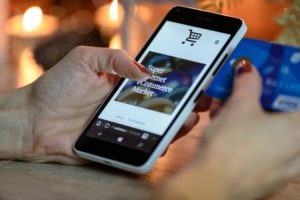
The main components of CRM are building and managing customer relationships through marketing, observing relationships as they mature through distinct phases, managing these relationships at each stage and recognizing that the distribution of value of a relationship to the firm is not homogeneous. When building and managing customer relationships through marketing, firms might benefit from using a variety of tools to help organizational design, incentive schemes, customer structures, and more to optimize the reach of its marketing campaigns. Through the acknowledgement of the distinct phases of CRM, businesses will be able to benefit from seeing the interaction of multiple relationships as connected transactions. The final factor of CRM highlights the importance of CRM through accounting for the profitability of customer relationships. Through studying the particular spending habits of customers, a firm may be able to dedicate different resources and amounts of attention to different types of consumers.[20]
Relational Intelligence, or awareness of the variety of relationships a customer can have with a firm, is an important component to the main phases of CRM. Companies may be good at capturing demographic data, such as gender, age, income, and education, and connecting them with purchasing information to categorize customers into profitability tiers, but this is only a firm’s mechanical view of customer relationships.[21] This therefore is a sign that firms believe that customers are still resources that can be used for up-sell or cross-sell opportunities, rather than humans looking for interesting and personalized interactions.[22]
CRM systems include:
- Data warehouse technology, used to aggregate transaction information, to merge the information with CRM products, and to provide key performance indicators.
- Opportunity management which helps the company to manage unpredictable growth and demand, and implement a good forecasting model to integrate sales history with sales projections.[23]
- CRM systems that track and measure marketing campaigns over multiple networks, tracking customer analysis by customer clicks and sales.
- Some CRM software is available as a software as a service (SaaS), delivered via the internet and accessed via a web browser instead of being installed on a local computer. Businesses using the software do not purchase it, but typically pay a recurring subscription fee to the software vendor.[12]
- For small businesses a CRM system may consist of a contact manager system that integrates emails, documents, jobs, faxes, and scheduling for individual accounts. CRM systems available for specific markets (legal, finance) frequently focus on event management and relationship tracking as opposed to financial return on investment (ROI).
- CRM systems for eCommerce, focused on marketing automation tasks, like: cart rescue, re-engage users with email, personalization.
- Customer-centric relationship management (CCRM) is a nascent sub-discipline that focuses on customer preferences instead of customer leverage. CCRM aims to add value by engaging customers in individual, interactive relationships.[20]
- Systems for non-profit and membership-based organizations help track constituents, fundraising, sponsors’ demographics, membership levels, membership directories, volunteering and communication with individuals.
